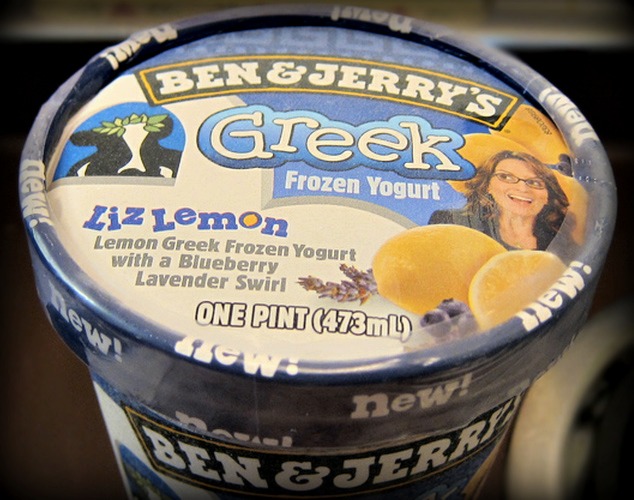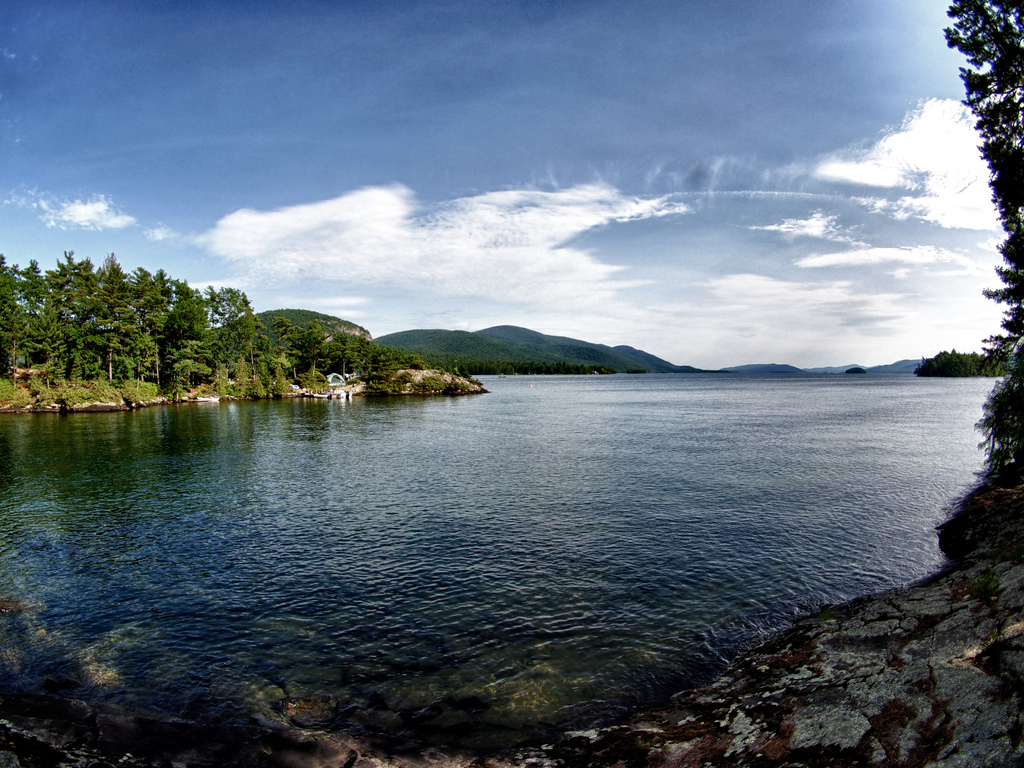Thomas Jefferson called Lake George in Upstate New York “without comparison, the most beautiful water I ever saw.” The painter Georgia O’Keefe lived part time at the lake during the 1920s and ’30s, drawing inspiration for some of her laconic, gauzy landscapes. The Whitneys summered there, the Roosevelts, Vanderbilts, Rockefellers — all the big industrialists. It’s still one of New York’s top vacation destinations, bringing in around $1 billion in tourism each year.
If climate change took vacations it would probably go there too. But climate change doesn’t take vacations. In fact, Mark Swinton says it’s kind of hanging out at Lake George all the time, and not in a regular-folk, kick-back-in-an-Adirondack-chair-and-read-a-good-book sorta way.
Swinton is a post-doctorate research associate with Rensselaer Polytechnic Institute and the university’s Darrin Fresh Water Institute. He has seen a dead zone crop up in the lake that appears to be fueled by unsavory algae, runoff tainted with overly rich nutrients, and stagnant circulation caused by oddball weather. It’s an unsettling sign that even the most pristine places, and the best-protected water supplies, could be in trouble, impacted by climate change in ways that we don’t even understand yet.
To get a better grasp on how land use and climate change are altering the lake, Rensselaer’s Darrin Institute, the nonprofit Fund for Lake George, and computer giant IBM have been laying the groundwork for a new “smart lake” initiative that will load up Lake George with more high-tech monitoring gadgets and sensors than any other body of fresh water in the world. When completed, it will be the Hubble Telescope of limnology, the Human Genome Project for freshwater lakes on a warming planet. And it will let us peer deep into what’s going to happen with some of our favorite vacation spots/ swimming holes — oh, and the water we drink — in a climate that is warming faster than ever.
It seems apropos: A generation ago people noticed pristine forests dying off in the Adirondack region. That led to the discovery of the silent killer: acid rain. People got angry and forced policy changes to cut back drastically on the residue from coal-burning industries in the Midwest falling hundreds of miles away. Now, an Adirondack lake could serve as a similar “canary in the coal mine” for climate change.
Lake George makes an ideal subject partly because it’s among the most pristine as we’ve got. Thirty-two miles long and 200 feet deep, fed by networks of springs and streams in a watershed that is 95 percent unbroken forest, it is relatively unperturbed by pollution and human interference. As an added bonus, scientists like Swinton have already amassed an impressive store of 30 years of hardcore data on the lake.
That data already suggests that there’s trouble in paradise — and not just with algae and dead zones. According to Swinton, while many local residents get their drinking water from Lake George, due to more frequent intense storms washing runoff into the lake, its salt concentration (mostly from road salt) has tripled since the middle of the last century. If that trend continues, the water of Lake George could soon become unsafe to drink for residents suffering high blood pressure. Once salt is dissolved in the water, there’s almost no practical way to get rid of it, he says. Left unheeded, there is some risk that excess salt might actually encourage toxic phytoplankton to start growing in the lake, which could cause problems for fish, or even humans, who prefer tasty water over nasty.
So in a first-of-its-kind, multimillion-dollar effort, dubbed the Jefferson Project, Swinton, along with researchers from Rensselaer, have partnered with IBM to place at least 40 scientifically sophisticated monitoring platforms in Lake George to help scientists build a super high-quality computer model of the lake. Once it’s complete, scientists will have a sort of SimCity for water, to envision freshwater bodies anywhere in the world, and to figure out how to keep those bodies clean and healthy.
IBM and project leaders from RPI are hush-hush about the specific scientific instruments they plan to use to gather this data while they finalize the research priorities. But the new automated system will put to shame the paltry data collected over the years by sundry grad students who have trekked out to the lakeshore to take samples and temperature readings. “If we’ve collected a few hundred thousand data points over 30 years, they’re talking about collecting that much in a single day,” Swinton says. “They’re talking about, in a single year collecting 100 terabytes of data. That is a phenomenally large amount of data.”
However, the real heart and soul of the Jefferson Project will be its brains. IBM has announced plans to dedicate a supercomputer capable of performing 188 trillion operations per second, that, like never before in history, will enable researchers to create computerized models of all sorts of chemical, physical, and biological processes that the sensors record. The project will also deploy more than 20 scientists to review that data, and imagine new questions, while devising additional clever experiments.
With the extra time, capabilities, and grad students freed from mundane water sampling duties, Swinton says he and his colleagues might be able to look more deeply into that salt issue. The Darren Institute, along with researchers from the Skidaway Institute of Oceanography, is also considering experiments that would increase salt concentrations in contained areas of the lake to see if it affects the mix of phytoplankton species. That extra load of carbon dioxide in our atmosphere that’s been causing the climate problem to begin with makes a good object for study too. Swinton imagines experiments that alter the amount of carbon-rich air fed into self-contained “mesocosms” on the lake.
And perhaps just as valuable, the new smart lake technology could enable researchers to begin to extrapolate back to a time when Lake George was even cleaner than it is today. Some day, they may even be able to figure out ways to restore lakes like Lake George to their really pristine conditions — a valuable tool in a world where fresh water is becoming more and more scarce.
“Water is the next oil,” Swinton says. “The next big wars could be over water.”
Then, on reflection, he adds, “It could be worse than oil. We can find alternative sources of energy, but there is no substitute for fresh water.”
Correction: This story originally stated that everyone in the Lake George region gets their drinking water from the lake. Some residents drink well water instead.





